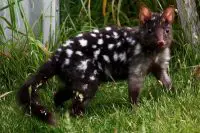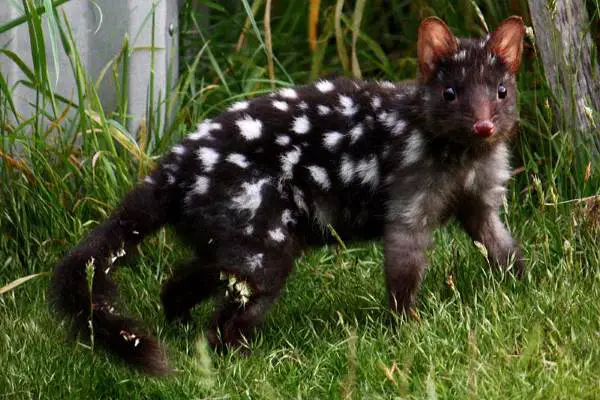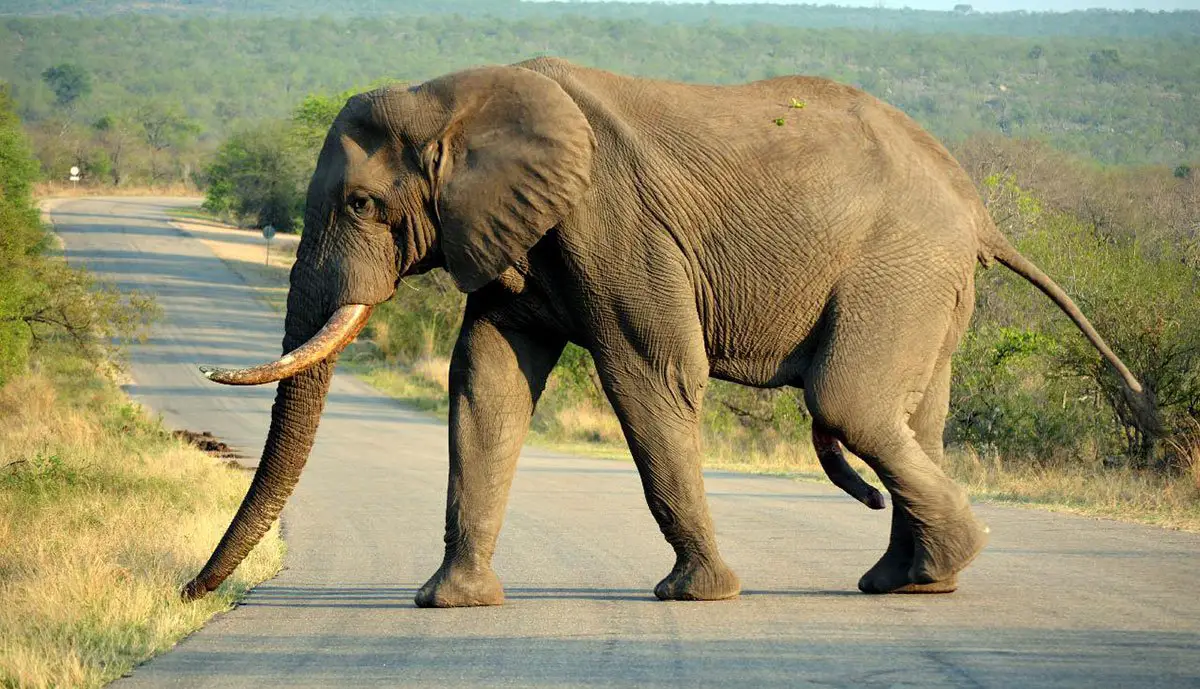Get to know all about eastern quolls in these amazing eastern quoll facts for kids. The eastern quoll (Dasyurus viverrinus) is a medium sized cat native to Australia. It is also known as the eastern native cat. Eastern quolls are fairly widespread throughout Tasmania. Over the past many decades, the eastern quoll has lost much of its population on the mainland Australia. Let’s see some of the most interesting eastern quoll facts.
Eastern Quoll Facts
Description: Adult males measure about 53 to 66 cm (21 to 26 in) in an overall length. The length of an eastern quoll’s tail is about 20 to 28 cm (7.9 to 11.0 in). Males are bigger than the females. Like tiger quolls, the eastern quoll is also recognized by its dense coat and white spots. The color of the coat is light fawn.
Size & Weight: The average length of females is about measuring 48 to 58 cm (19 to 23 in) with the tail measuring at 17 to 24 cm (6.7 to 9.4 in). Adult quolls weigh up to 1.5 pound.
Distribution: The eastern quoll had lived all throughout the eastern South Australia, New South Wales, and Victoria but its population has a decreasing trend. Currently, eastern quolls occur in large numbers in Tasmania.
Habitat: Eastern quolls likely make habitats in alpine areas, rainforests, scrub, and heathland at an elevation of about 4,900 feet above the sea level. They are typically found in forest mosaics, agricultural land, and dry grasslands.
 Behavior & Diet: Like most other quolls, eastern quolls also hunts alone. They will eat small mammals, reptiles, insects, and birds. Eastern quolls are most likely to prey at night. They are known to spend day in natural hollow crevices, burrows, and hollow trees.
Behavior & Diet: Like most other quolls, eastern quolls also hunts alone. They will eat small mammals, reptiles, insects, and birds. Eastern quolls are most likely to prey at night. They are known to spend day in natural hollow crevices, burrows, and hollow trees.
Reproduction: The breeding season of eastern quolls begins in early winter. The female will produce 20 young. The gestation period ranges from 19 – 24 days. Young quoll will open its eyes after 79 days. The weaning period is about 150 to 165 days. Eastern quolls attain maturity in their first year.
Lifespan: The average life expectancy of an eastern quoll is about 7 years in captivity.
Vocalizations: Eastern quolls produce numerous sounds such as hissing, coughing, and shriek.
Predators: The primary predators of eastern quoll are Tasmanian devil and masked owls.
Conservation Status: Eastern quolls are listed as endangered species.





